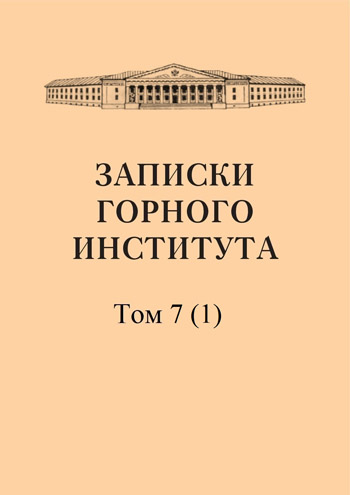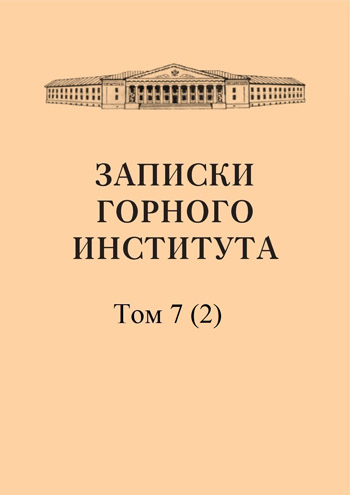-
Date submitted1925-07-11
-
Date accepted1925-09-29
-
Date published1926-01-01
In memory of E.S. Fedorov (1853 - 1919)
- Authors:
- Volume 7(1)
Resuming the publication of “Proceedings of the Mining Institute”, in these lines we want to remember here who was its founder and permanent editor. The significance of E. S. Fedorov’s scientific works is enormous. He worked in the following fields of knowledge: crystallography, mineralogy, geometry, petrography and geology. He wrote over 400 works in various sections of these sciences. A fairly complete list of these works is contained in Volume III of “Materials for the Biographical Dictionary of Full Members of the Academy of Sciences,” Part 2, M-Ya, p. 205.
-
Date submitted1925-07-20
-
Date accepted1925-09-22
-
Date published1926-01-01
On the issue of calculating basis measurement errors using the improved Iederin device
- Authors:
- N. Kell'
The article highlights the most important constant error, and indicates the importance of this highlighting for a correct judgment about the accuracy of basis measurement with the Iederin device. The main constant error is the error in a given length of wire. Other errors: from incorrect consideration of temperature, tilt, and deviation of the wire from the basis axis are insignificant. The available material shows: 1) a decrease in the relative error with increasing basal length for one wire; 2) good agreement between the results from measurements back and forth with one wire, which gives reason not to look for any other systematic error other than errors in the standardization of wires. The absence of systematic errors in the measurement process itself is the main advantage of the method of measuring with Invar wires of considerable length.
-
Date submitted1925-07-05
-
Date accepted1925-09-23
-
Date published1926-01-01
Studies in the theory of least squares
- Authors:
- I. M. Bakhurin
The content of this article can be divided into two parts: the first is the derivation of a formula (first proposed by the author) for the average error of the balanced value of all measured quantities included in the balance, the second is a new derivation of the formula for the average error of one observation. Using this relation (see article), we give a new simple derivative of the formula mentioned above, which is important for the theory of least squares.
-
Date submitted1925-07-27
-
Date accepted1925-09-19
-
Date published1926-01-01
Различные объяснения двусторонней симметрии кораллов Rugosa
- Authors:
- Unknown
В двусторонней симметрии кораллов Rugosa прежде всего бросается в глаза и заставляет искать объяснения внешняя форма коралла— согнутого на подобие рога конуса. Еще Неймар (Die Stamme des Thierreichs) указывает на таковую форму, как на характерную для всей группы Rugosa. В данном мною объяснении строения Rugosa я исходил от впервые мною указанного факта бокового прикрепления кораллов Rugosa, так что в этом есть некоторое сходство с гипотезой Bernard'а. Ноя исходил из твердо мною установленного факта бокового приростания, при чем это приростание. является первичным, а не вторичным, как у Bernard'а, по предположению которого боковое приростание сменяет первичное осевое приростание, происходящее как бы с усечением острого конца.
-
Date submitted1925-07-01
-
Date accepted1925-09-27
-
Date published1926-01-01
Type of cross-bedding as a criterion for the genesis of sediments
- Authors:
- Yu. A. Zhemchuzhnikov
Observations of the forms and character of cross-bedding gave me reason to ask myself whether they could serve as a criterion for recognizing the genesis of this sequence. The purpose of this work is: 1) to arouse interest and outline a program for detailed and careful observations of the very peculiar phenomena of cross-bedding; 2) indicate an approach to their interpretation (given the current state of our knowledge) and 3) applying these general considerations to the observed specific cases, raise the question of the possible clarification of the genesis of the coal-bearing strata of the Moscow basin and continental deposits in general by studying the nature of the bedding."
-
Date submitted1925-07-11
-
Date accepted1925-09-18
-
Date published1926-01-01
About the geological structure of the Southern Urals
- Authors:
- D. Nalivkin
According to its geological structure, the Southern Urals can be divided into three parts: western, central and eastern, elongated along strike. The main objective of this essay is to raise a number of general issues - the division of the Southern Urals, continental Devonian deposits, the section diagram and give a brief description of the main facies and horizons of the southwestern Urals. The essay is a preface, an introduction to a number of works related to the five-verst survey of the Urals, carried out by the Geological Committee. These works should be widely developed over the next five years, and their results, of course, will change and supplement the data presented in the essay.
-
Date submitted1925-07-23
-
Date accepted1925-09-07
-
Date published1926-01-01
Mapping of mineral deposits (With a map of polymetallic deposits of the Russian Altai)
- Authors:
- A. K. Boldyrev
- I. F. Grigor'ev
Mapping mineral deposits is one of the most important objective methods for studying them. This work is devoted to the development of rational mapping methods, treating this issue in a general form. The first reason for this work was the urgent need for a rationally constructed map of the Altai polymetallic deposits. The need for such a map immediately became clear in the first years of research by the Geological Committee in Altai, and at the same time we both undertook work in two directions: a mapping methodology was developed and literary, archival and material unpublished by Altai workers of Geological Comittee an necessary for mapping the Altai deposits, was collected. The result of work in the first direction is this article.
-
Date submitted1925-07-22
-
Date accepted1925-09-10
-
Date published1926-01-01
Crushing theory and its application to jaw crushers
- Authors:
- L. B. Levenson
The article provides some theoretical basis for technical design and critical evaluation of jaw crushers. The general advantages of jaw crushers are high productivity, simplicity of design, low cost and ease of repair; Disadvantages - frequency of work and the presence of large swinging masses, which produces a lot of noise during operation and causes vibrations in the factory building. Therefore, the issue of balancing a jaw crusher is very important for practice. Typically, one jaw is installed stationary, while the other receives swings from the drive mechanism. The author examines the design types of jaw crushers, the location and shape of the jaws, determines the most advantageous shaft speed, productivity and energy consumption and other indicators (see article).


